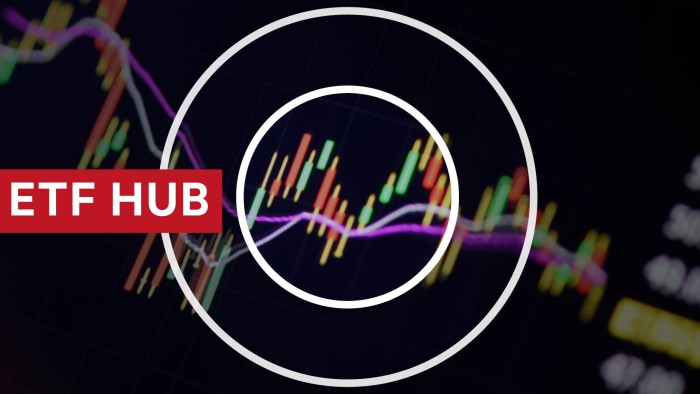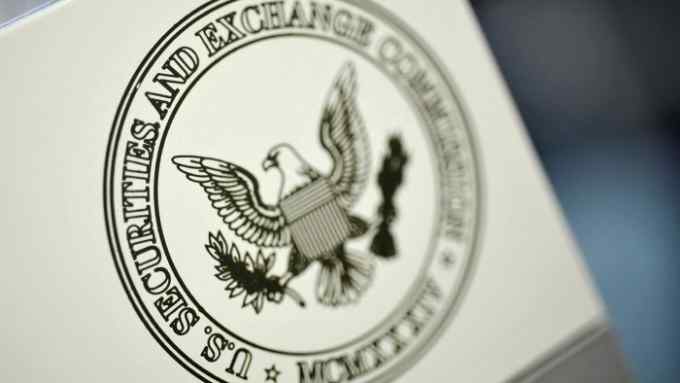What is an ETF?

Simply sign up to the Exchange traded funds myFT Digest -- delivered directly to your inbox.
Interested in ETFs?
Visit our ETF Hub for investor news and education, market updates and analysis and easy-to-use tools to help you select the right ETFs.
What is an ETF?
An exchange traded fund, or ETF, is a basket of different securities that are pooled together into one fund which is traded on a stock exchange. Most ETFs track an index, or benchmark, and try to replicate its performance.
By buying even a single share of an ETF, the investor gains exposure to the whole basket of securities that the ETF holds. In the case of the most famous index tracker of them all, the SPDR S&P 500 ETF (SPY), it invests in a little piece of every constituent company in the S&P 500 index.
ETFs are not limited to investments in stock markets, however. They can also invest in bonds, commodities, currencies, options or a blend of assets.
Most ETFs invest in assets in the index they are tracking. Most are passively, rather than actively managed, which means the manager does not have to decide what securities to buy because that is pre-determined by the index that the ETF is tracking. Nor does the manager have to decide how much of the security to own — that is determined by its weight in the underlying index. If Company A’s shares represent 3 per cent of all the shares included in that index, then the ETF tracking it will invest 3 per cent of the total assets under management in the shares of Company A.
ETFs can also be actively managed, which means that the manager chooses what will be included in the basket of securities the ETF will track. Some are far more complex.
What is the difference between an ETF and an ETP?
The problem is that although exchange traded product is the official umbrella term for both ETFs and their very differently structured and more complex relatives, the dominance of ETFs means that all ETPs — including lesser-known variants such as exchange traded commodities and exchange traded instruments — tend to be referred to as ETFs.
This video produced before the markets meltdown during the global Covid-19 lockdowns helps explain.
Buyers should be aware that exchange traded products differ from one another quite markedly. Exchange traded notes, for example, are created by Wall Street financial engineers from derivatives, as a way of mimicking the performance of an underlying index. They are in practice IOUs from a sponsoring bank, which promises to deliver the returns of the index in return for a fee. Investors are therefore exposed to the risk that the sponsoring bank fails.
Inverse and leveraged ETPs also carry their own risk profile and have been described as gambling tools rather than trading tools. A leveraged ETP might, for example, offer twice the return of the underlying asset on that particular day. So if the underlying security rises in value every day, then a long-term leveraged long investor makes a large amount of money. Similarly a long-term leveraged inverse investor will make good profits if the security falls every day. In reality, however, the vast majority of asset prices rise some days and fall on others.
The problem for a long-term holder of a leveraged ETP is the amplification of the market movements.
Inside ETFs

The FT has teamed up with ETF specialist TrackInsight to bring you independent and reliable data alongside our essential news and analysis of everything from market trends and new issues, to risk management and advice on constructing your portfolio. Find out more here
Is owning ETFs better than having mutual funds?
Exchange traded funds offer a low-cost way of owning a large number of securities. As most are passively managed fees tend to be very low.
Investors can also trade an ETF whenever the exchange they are listed on is open. This differs from mutual funds for which orders to buy and sell can only be traded once per day after the close of trading.
Investors can also use ETFs to perform investment strategies including selling short and placing stop-loss or limit orders.
An ETF can be more tax efficient than owning a mutual fund because ETFs do not tend to distribute much in the way of capital gains as index-tracking ETFs do not make many trades.

Click here to visit the ETF Hub

Comments